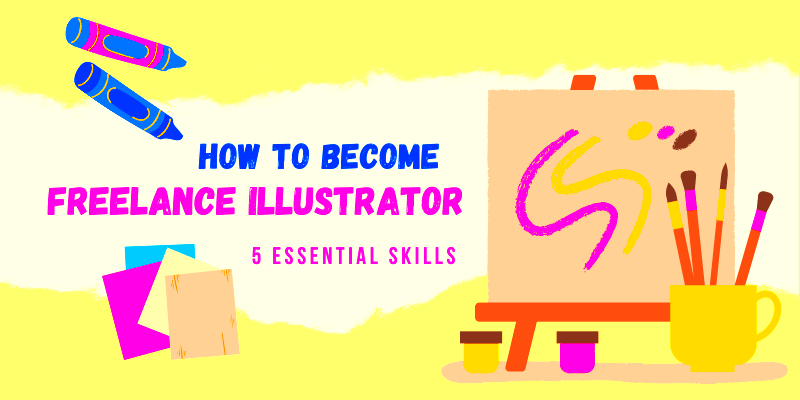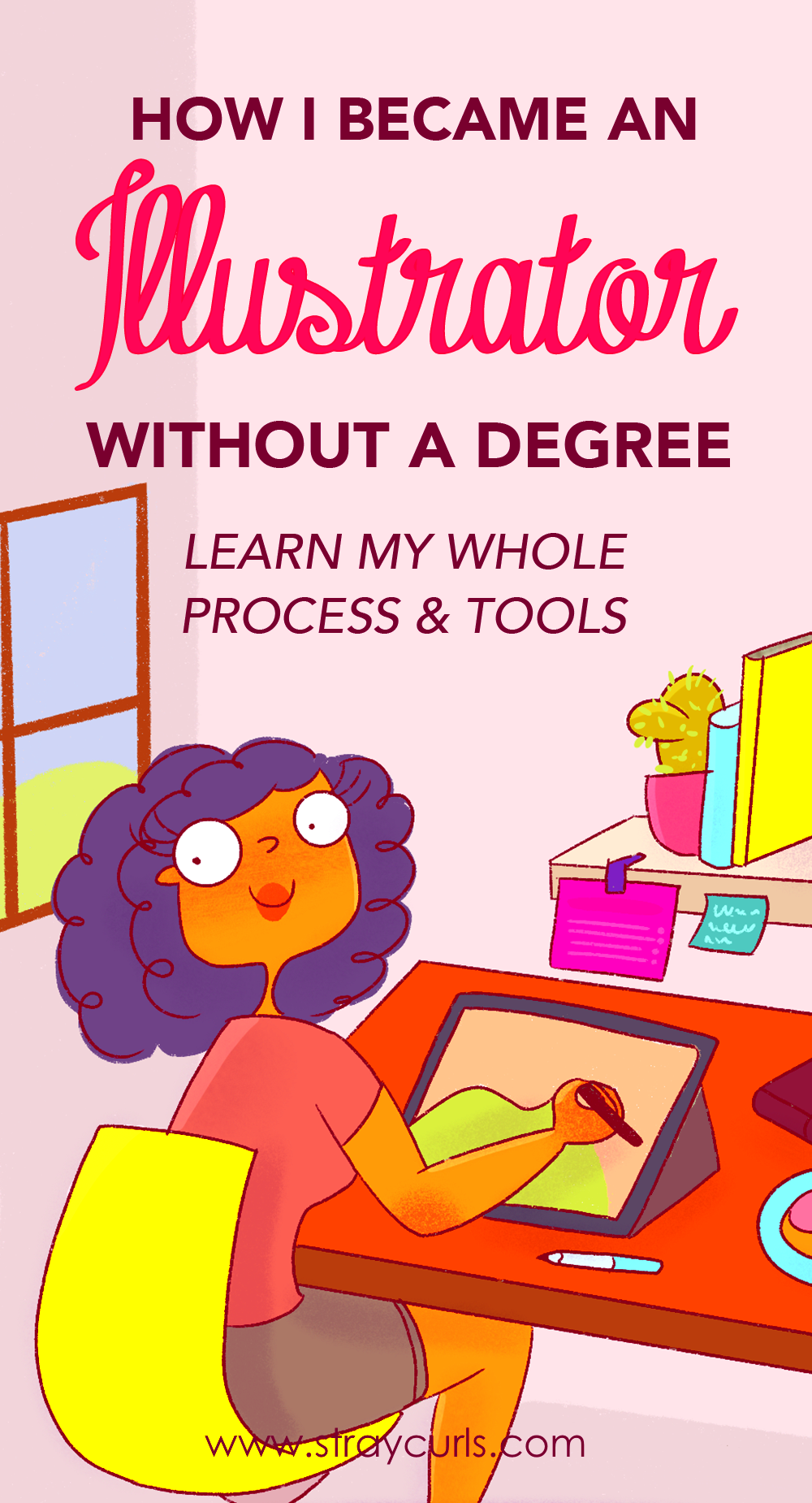Freelance illustration is an exciting career choice, especially for those passionate about art but unsure where to start. As a freelance illustrator, you get to create art for various clients and projects, without the need for a full-time job or office. Whether you're interested in digital art, traditional drawing, or graphic design, freelancing offers a lot of flexibility. The best part is that you can get started with little to no prior professional experience. All you need is a strong portfolio, a good understanding of your tools, and a passion for creating art.
Understanding the Basics of Illustration

Before diving into the world of freelance illustration, it's important to understand what illustration is. Illustration refers to visual artwork created to explain, decorate, or enhance a concept or idea. It can be used in books, advertisements, websites, packaging, and more. As a freelancer, you'll need to develop skills in various styles and techniques depending on your clients' needs.
There are two main categories of illustration:
- Traditional Illustration: This involves using physical media like pencils, pens, paints, and watercolors to create artwork.
- Digital Illustration: This uses software like Adobe Illustrator, Photoshop, or Procreate to create artwork on a computer or tablet.
Freelance illustrators often specialize in one of these categories, but having knowledge of both can be beneficial. A good freelance illustrator is also skilled in understanding client requirements, creating drafts, and revising work to meet expectations.
Also Read This: Top 10 Automation Specialists on Fiverr in 2024
Choosing Your Niche in Illustration

Finding your niche as a freelance illustrator is essential for standing out in the competitive market. A niche is a specific area of illustration that you specialize in, such as children's books, editorial illustrations, or logo design. Picking a niche helps potential clients understand what you do best, making it easier for them to hire you for their projects.
Here are some popular illustration niches:
- Children's Book Illustration: Illustrations for picture books, early readers, and chapter books.
- Editorial Illustration: Artwork used in magazines, newspapers, and online publications.
- Concept Art: Illustrations used in film, video games, or animation to visualize characters and settings.
- Product Design Illustration: Creating illustrations for packaging or product advertisements.
- Comics and Graphic Novels: Storytelling through sequential art.
Choosing a niche allows you to develop your skills in a specific area, making you more attractive to clients looking for expertise. If you're unsure, start by experimenting with a few different styles and see which one you enjoy most. Over time, your style and expertise will help guide you toward your ideal niche.
Also Read This: How to Create a Custom Order on Fiverr
Building a Portfolio with No Experience

Starting with no professional experience can feel challenging, but it's not impossible to build a solid portfolio. A portfolio is your visual resume, showing potential clients your style, creativity, and range. Even without client work, there are plenty of ways to build a strong portfolio.
Here are some tips to get you started:
- Personal Projects: Create artwork that showcases your skills. Whether it's a character design, a landscape, or a conceptual piece, make sure it's something you're passionate about.
- Fan Art: If you're a fan of movies, games, or books, create illustrations based on these. Fan art is a great way to show off your abilities while engaging with a community of fans.
- Collaborate with Other Creatives: Reach out to writers, bloggers, or even other artists to work on collaborative projects. This can give you some experience working with others while also adding content to your portfolio.
- Volunteer for Nonprofits or Small Businesses: Many small companies or charitable organizations need artwork but can't afford professional illustrators. Offering your services for free or at a low rate can help you gain real-world experience.
Once you've created a few pieces, be sure to showcase them online. A strong online presence will help attract potential clients, even if you're just starting out.
Also Read This: How Much Does It Cost to Run Fiverr?
Setting Up Your Fiverr Profile and Gig
Fiverr is one of the most popular platforms for freelancers to find clients, and it's easy to set up a profile and gig. Your profile is your chance to introduce yourself and highlight your skills, while your gig is where you'll offer your illustration services.
Here's how to set it up:
- Profile Picture: Use a clear, professional photo of yourself or a logo that represents you. This makes you look more approachable and trustworthy.
- Bio: Write a short, engaging bio that explains who you are and what kind of illustration work you do. Focus on your strengths and interests, but also keep it professional.
- Gig Description: Be clear about what you’re offering. Include details about the type of illustration work you do, the process you follow, and what the client can expect. Mention any experience or projects you've worked on, even if they are personal.
- Portfolio: Upload your best work to showcase your skills. Make sure your portfolio is varied to show that you can handle different types of illustration work.
- Pricing: Start with competitive prices to attract your first clients. As you gain more experience, you can increase your rates.
Once your profile and gig are set up, make sure to check Fiverr regularly for new opportunities and respond to client inquiries promptly to maintain a good reputation.
Also Read This: Top Fiverr Sellers with High Ratings in 2024
How to Market Your Freelance Illustration Services
Marketing is a key part of growing your freelance illustration career. You can be the most talented illustrator, but without effective marketing, it can be hard to find clients. Fortunately, there are many ways to get the word out about your services.
Here are some marketing strategies that can help:
- Social Media: Platforms like Instagram, Twitter, and Facebook are great places to showcase your work and connect with potential clients. Post regularly, use relevant hashtags, and engage with your followers.
- Online Portfolio: Create a personal website to showcase your best work. Make sure it's easy to navigate, with clear contact information and links to your Fiverr profile or other platforms you use.
- Networking: Connect with other creatives in the industry. Join Facebook groups, attend virtual events, and participate in art communities to expand your network and build relationships.
- Collaborations and Guest Posts: Reach out to other artists, influencers, or blogs in the art community for collaborative projects or guest posts. This can expose your work to a broader audience.
- Offer Special Promotions: Offering limited-time discounts or special packages can attract new clients. Once you have their attention, focus on delivering high-quality work that keeps them coming back.
Effective marketing takes time, but being consistent and engaging with your audience will gradually help you build a steady stream of clients. Keep learning about different marketing strategies and adjust your approach as needed.
Also Read This: Can I Suspend My Gig on Fiverr? Here’s What You Need to Know
Handling Clients and Managing Projects
Successfully handling clients and managing projects is key to growing your freelance illustration business. Once you land a client, it’s important to establish clear communication and set expectations right from the start. Clients appreciate illustrators who are organized, reliable, and responsive. Good project management ensures both you and the client are satisfied with the final result.
Here are some tips to help you manage clients and projects effectively:
- Clear Communication: From the first interaction to the final delivery, ensure that you’re always clear about deadlines, deliverables, and costs. Don’t hesitate to ask questions if something is unclear.
- Set Deadlines: Make sure to set realistic deadlines that account for your availability. Always leave some buffer time in case revisions are needed.
- Use Contracts: A contract ensures that both you and the client agree on the scope of work, payment terms, and deadlines. It protects you from misunderstandings and establishes trust.
- Feedback and Revisions: After delivering the first draft, ask for client feedback. Be open to making revisions and ensure you understand what the client wants before making changes.
- Project Management Tools: Use tools like Trello, Asana, or even simple spreadsheets to track project progress. These tools help you stay organized and ensure deadlines are met.
Managing clients professionally and delivering quality work on time will lead to repeat business and positive reviews, which are essential for growing your freelance career.
Also Read This: Ever Wondered How to Outline an Image in Canva? Learn Here
Frequently Asked Questions
When you're starting as a freelance illustrator, there are several common questions that come up. Here are a few answers to help guide you on your journey:
- How do I find clients? You can find clients by using freelance platforms like Fiverr, networking in art communities, and reaching out to potential clients through social media. Having a strong online presence is key.
- How much should I charge? When starting, research what other illustrators in your niche are charging. Pricing can vary depending on the complexity of the project, but start at a competitive rate to attract your first clients. As you gain experience, you can increase your rates.
- How do I handle revisions? It’s important to clearly define the number of revisions you’re willing to do in your contract. Most illustrators offer 2-3 rounds of revisions before additional fees are charged.
- Do I need a website? While not mandatory, having a personal website helps you stand out and provides a professional space to showcase your work. It’s also useful for SEO and attracting clients who find you online.
- What should I include in my portfolio? Your portfolio should include your best work across a range of styles and projects. Even if you're just starting, include personal projects, fan art, or any freelance work you’ve done.
Conclusion: Starting Your Freelance Illustrator Journey
Starting your freelance illustration journey may feel overwhelming at first, but with the right mindset and strategies, you can build a successful career. Focus on honing your skills, building a portfolio, and marketing your services effectively. Use platforms like Fiverr to find clients, and don’t forget to prioritize clear communication and professionalism.
Remember, success in freelance illustration takes time, persistence, and adaptability. Stay consistent with your work, keep learning, and be open to feedback. As you grow your experience, you’ll find your niche and build lasting relationships with clients.
With passion, hard work, and a commitment to improving your craft, you can thrive as a freelance illustrator and enjoy the freedom and satisfaction that comes with being your own boss.




